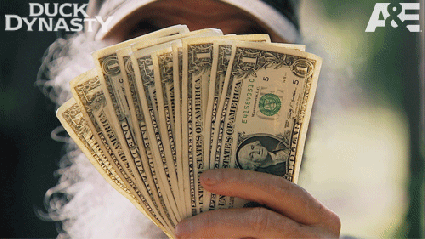Last week I talked about how repairs on rental property you own can kill your cashflow. So far this year, our rental repairs have consisted of three field lines, one roof, lots of AC calls, a water heater, a water main and a big subfloor repair. All these amounted to about $30,000 in out-of-pocket expense.
Think about that number for a second. If you had $30,000 in repairs, like we did, and you have 10 properties that cashflow $300 a month, that means it took from January all the way through October just to pay for your rental repairs. That also means you only got paid for November and December, assuming nothing else happened like a house going vacant.
That’s a long time to go without a paycheck, especially if that is your sole means of income. Absorbing these sorts of cost before your rentals are paid for can get hairy quickly.
So is there a better way while you’re estate building?
Enter the master lease.

A master lease, sometimes called a sandwich lease, is where an investor rents a house from a landlord with the right to sublease that same property to an occupant tenant. The investor will rent it from the landlord for less than market rates, thus making a spread between that and the rate the occupant pays.
I learned this technique from David Tilney. He has the best and most comprehensive course on not only master leasing, but also on property management. Recently, one of his students gave an awesome youtube testimony as to how well master leasing works.
The student’s name is Matt, and in the video he was kind enough to share his real world experience. He said in only six years, he had amassed a portfolio of 118 master leases – stating that his average rents were $1,000 a home. Now, Matt didn’t tell what his spread was, but let’s use a hypothetical 10 percent.
Ten percent of $1,000 a month on 118 homes is $11,800. Do you think you could live well on that kind of money? I know I could.

But it gets even better. Because Matt is a master tenant, and not an owner, he doesn’t have to worry about all the repairs associated with owning the properties. In other words, that $11,800 a month is pure positive cashflow and doesn’t change unless the home goes vacant.
After Matt’s inspirational testimonial, and the year we’ve had, Ashley and I have decided to add as many master leases to our portfolio as possible. We’ve had success in the past with marketing to accidental and tired landlords. But a recent master lease made us decide to look at another set of people — Investors.
We just did a master lease in Cartersville where the property was owned by an investor’s retirement account — which means the investor can’t manage it himself. You may be asking yourself why he chose a master lease with us over a property management company. The answer is that he knows we will treat the property as if it is our own.
You see, we spend a lot of energy looking for the right tenant. We learned the hard way you don’t just take the first person who comes along with the money. So we developed a rigorous process to find good quality tenants. Consequently, our tenants stay, pay and take care of the property for a long time.

Another group we plan to market to is “ender” investors. These are the investors who have invested wisely, and are now retiring on paid-for rentals. As they leave to go travel, Ashley and I will be here to take care of the multiple properties they need managed while they enjoy their retirement.
Now, if you’d like to learn more on how to get into master leases, I highly recommended taking David Tilney course. Like I said, his style and systems are simply amazing. To find out more, visit his website at www.davidtilney.com.
Joe and Ashley English buy houses and mobile homes in Northwest Georgia. For more information or to ask a question, go to www.cashflowwithjoe.com or call Joe at 678-986-6813.
